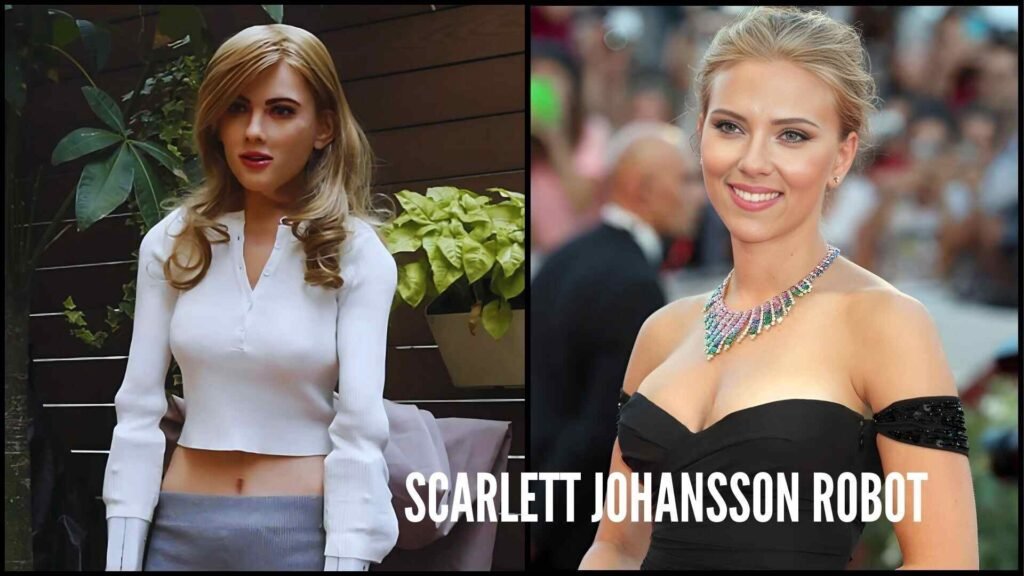The Scarlett Johansson Robot: Defining the Obsessive Appetite for Machines Human-Like
At a time when robotics and 3D printing technologies are within reach, hobbyists are just beginning to create robots that simulate real human beings. Not surprisingly, some of these robots take after celebrities and one of the most interesting examples of this trend is the celebrity robot. This paper shall discuss the origin of the Scarlett Johansson robot, the legal effect of replicating celebrity lookalikes, and the greater impact robotics has on culture.
The Robot Is Born
After venturing out into the streets of Hong Kong, the designer Ricky Ma decided to go forward with the project to create a robot that looks like Scarlett Johansson. What he came up with, which he has appropriately dubbed “Mark 1,” chiseled out 18 months of his life and cost him upwards of $50,000. Done on his patio with a 3D printer and self-taught software skills, this was indeed a lifelike piece of machinery. Although Ma doesn’t admit to the actress being his inspiration, it’s pretty dead obvious. The robot is designed to move, smile, and even wink, adding to its lifelike appearance.
Why Create a Scarlett Johansson Robot?
The Scarlett Johansson robot raises a number of questions: why on earth would somebody build a robot resembling one of the most famous actresses in the world? Many people are attracted to the challenge and ingenuity involved in replicating human features. With the advancing technology of robotics and 3D printing, enthusiasts can really let their imagination run wild and test the boundaries of what’s possible.
The Future of Celebrity Robots
Now, as technology can enable people to try and make their robot or other celebrity lookalikes, certain questions arise regarding privacy, ownership, and control. Scarlett Johansson has been a victim of unwanted attention in the past—for instance, when a cyberstalker hacked into her computer and stole her photos. In the case of the robot, the actress is again objectified, but differently.
As AI and robotics become more accessible and user-friendly for in-home applications, more women may be thrust into an uncomfortable reality that a stranger can own and control a version of themselves. The robot is just another example of how technology is a double-edged sword—tremendous opportunities and potential ethical dilemmas.

Legal Concerns and Precedents
Does the likeness really create high-reaching and controversial concerns about the law and celebrity rights when a person adopts the mentality of this robot? Is it ethical or even lawful, especially when a person cannot get the attention of their love interest, to build a robot with a close resemblance to that particular person? While making dolls and wax famous likenesses is common, adding the dimension of moving and interacting with the object complicates things.
Had Ma sold the Scarlett Johansson robot or otherwise profited from it, according to Ryan Calo, a law professor at the University of Washington, the actress could have sued him. Not quite hypothetical: in the early 1990s, Samsung ran ads that featured a robot closely resembling Vanna White—the “Wheel of Fortune” star. White sued—and won—a legal precedent for protecting celebrity likenesses.
Similarly, John Ratzenberger and George Wendt of the TV series “Cheers” filed a suit over robots that looked like their characters in an airport bar. That case was settled after it made its way to the Supreme Court. However, since Ma created the Scarlett Johansson robot at home and has yet to make any money off it, Johansson might find that harder if she took action.
The Scarlett Johansson Robot and Gender Dynamics
The robot parallels the gender dynamics within the robotics industry. Most robots designed for labor or for personal assistance feature a female characteristic, such as Siri and Cortana. When robotics technology democratizes in the future, it’s not hard to imagine people creating personalized robots in the image of female celebrities, like the Scarlett Johansson robot.
Margot Kaminski, an Ohio State University law professor, says there’s a gendered element to this trend. She points out that many of the robots designed to do labor or assist are female—zeigen and reflect societal norms about gender roles. Click to get ChatGPT Mod APK
Challenges in the Creation of Lifelike Robots
Despite the impressive nature of the Scarlett Johansson robot, it has no particular intelligence. It can answer simple questions, show basic emotions, and so forth. Creating a robot that replicates the human look is challenging, and Mark 1 has given just a starting point for what is possible.
However, creating realistic copies is only partially new. The American Girl doll series allows parents to create dolls by duplicating their children, while robotics labs have more recently developed very advanced human-like robots. For instance, Hiroshi Ishiguro Laboratories in Japan has developed very realistic robots expressing human-like facial expressions and movements. What is astonishing about the Scarlett Johansson robot is that Ma built it at his home, a consideration regarding just how much robotics technology has opened up.

Conclusion
The robot is going to be one of the most interesting stretches of intersection between technology, creativity, and ethics. Implications of these are that with increased use of robotics and 3D printing, there will be an even larger potential for making lifelike machines. The legal and ethical dilemmas raised by creating robots that actually look like real people or celebrities like Scarlett Johansson will definitely remain a highly debatable issue.
This becomes a strong dime with the need for considerations to lay limitations on technology regarding possible impacts on privacy, identity, and what it means to be human. The Scarlett Johansson robot, on the other hand, stands to remind us exactly how great technology is as an instrument of innovation but, at the same time, should be subjected to thoughtfulness with regard to broader effects on society. To know more Chick Here




















